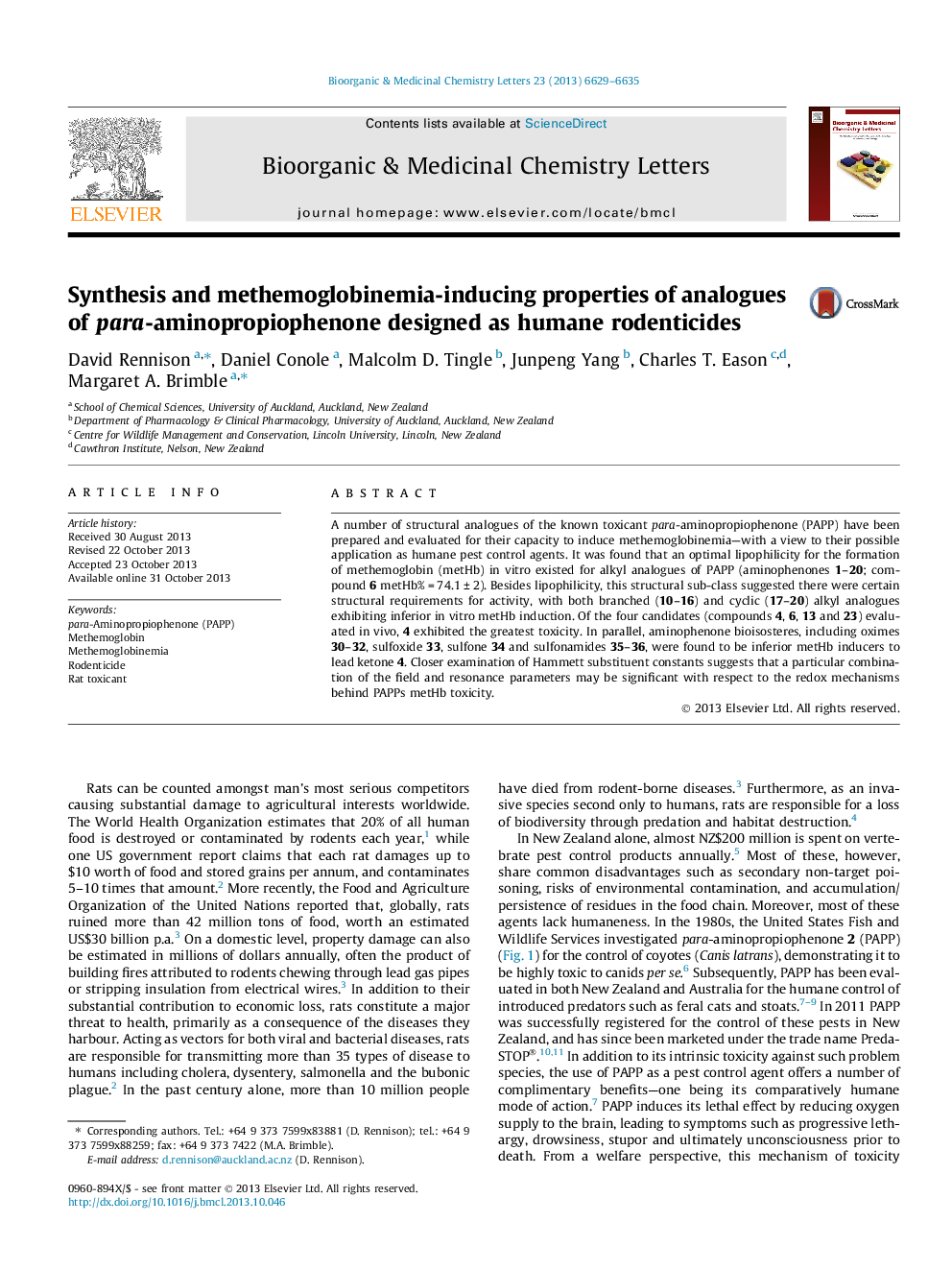| Article ID | Journal | Published Year | Pages | File Type |
|---|---|---|---|---|
| 10593276 | Bioorganic & Medicinal Chemistry Letters | 2013 | 7 Pages |
Abstract
A number of structural analogues of the known toxicant para-aminopropiophenone (PAPP) have been prepared and evaluated for their capacity to induce methemoglobinemia-with a view to their possible application as humane pest control agents. It was found that an optimal lipophilicity for the formation of methemoglobin (metHb) in vitro existed for alkyl analogues of PAPP (aminophenones 1-20; compound 6 metHb% = 74.1 ± 2). Besides lipophilicity, this structural sub-class suggested there were certain structural requirements for activity, with both branched (10-16) and cyclic (17-20) alkyl analogues exhibiting inferior in vitro metHb induction. Of the four candidates (compounds 4, 6, 13 and 23) evaluated in vivo, 4 exhibited the greatest toxicity. In parallel, aminophenone bioisosteres, including oximes 30-32, sulfoxide 33, sulfone 34 and sulfonamides 35-36, were found to be inferior metHb inducers to lead ketone 4. Closer examination of Hammett substituent constants suggests that a particular combination of the field and resonance parameters may be significant with respect to the redox mechanisms behind PAPPs metHb toxicity.
Related Topics
Physical Sciences and Engineering
Chemistry
Organic Chemistry
Authors
David Rennison, Daniel Conole, Malcolm D. Tingle, Junpeng Yang, Charles T. Eason, Margaret A. Brimble,
